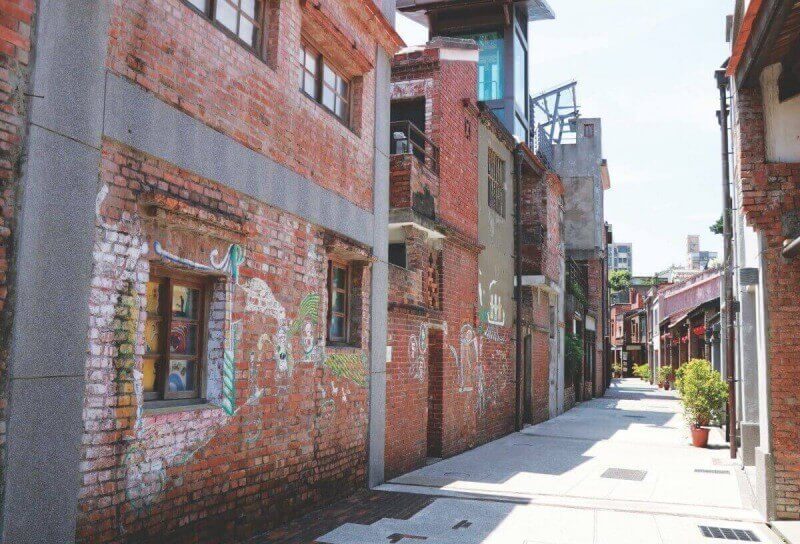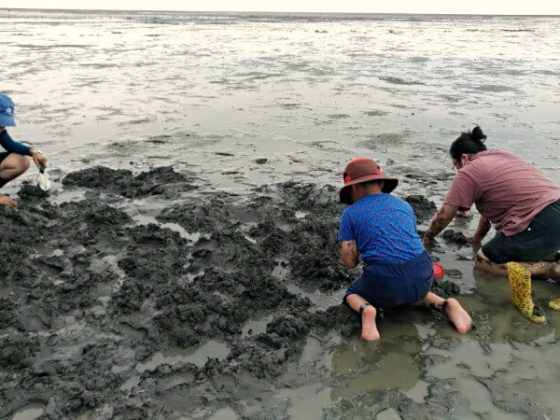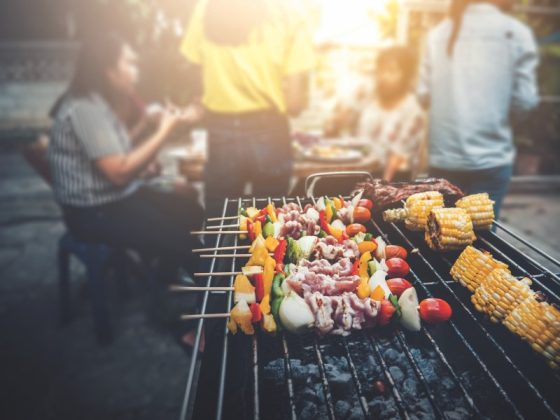3. BANGKA — Lives of the Common Folk
Taipei’s oldest settlement, Wanhua/Bangka, took shape in the early 1700s. Bangka is sited where the Xindian and Dahan Rivers (新店溪、大漢溪) meet to form the Tamsui River — optimal for trade within the Taipei Basin of imperial times.
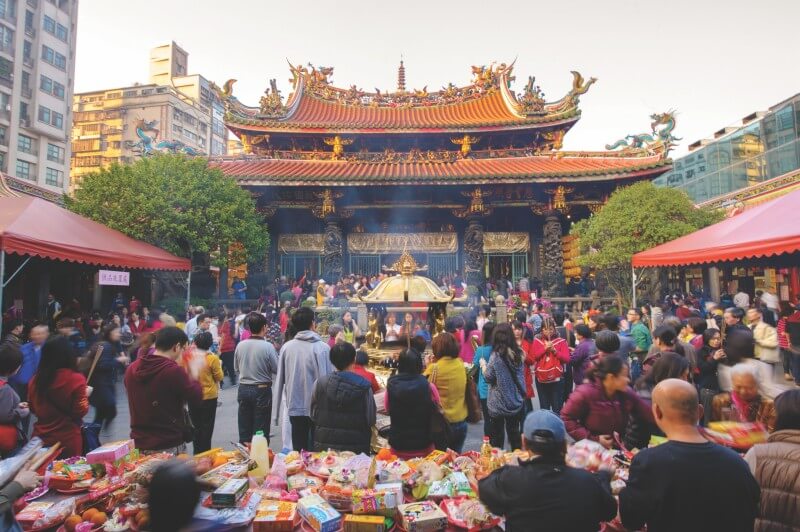
In the imperial days, goods were brought by river transport to the coastal port of Tamsui (淡水) for transshipment to larger ships for delivery to far-flung destinations. A key reason for Bangka’s usurpation by Dadaocheng as the basin’s main commercial center was the silting-up of its river port. Bangka slipped into a long period of economic decline, but one positive from its period of slumber was that the local community looked inward. The common folk proudly and even definitely stick to time-honored cultural traditions, and today this is perhaps Taipei’s best place for viewing old-time religious practices and culinary traditions. (Read more: Street Smarts: Capturing Taipei Street Scenes with Flaneur)
The soul of the community resides in the magnificent Longshan Temple (艋舺龍山寺), a place of priceless historical importance. This is also perhaps Taipei’s most important temple, assuredly its most visited, and one of the world’s elite examples of classical Chinese temple architecture. Right along the temple’s east-side exterior is old, short, exceedingly narrow Herb Lane (青草巷, Lane 224 on Xichang Street 西昌街), stuffed with sellers of herbs used in traditional tonics, salves, and medicinal foods. Many buyers will have first consulted with the gods inside Longshan Temple before making their purchase. The use of herbs for medicinal purposes is an intrinsic element of traditional everyday folk life, in items used before the fact to enhance health and after the fact to treat ailments. Herb sellers were a trusted source of herb- specific medical advice.
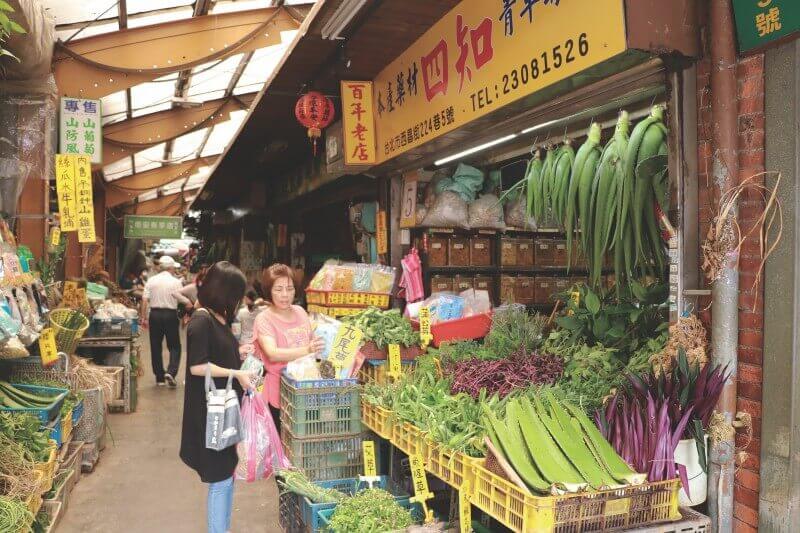
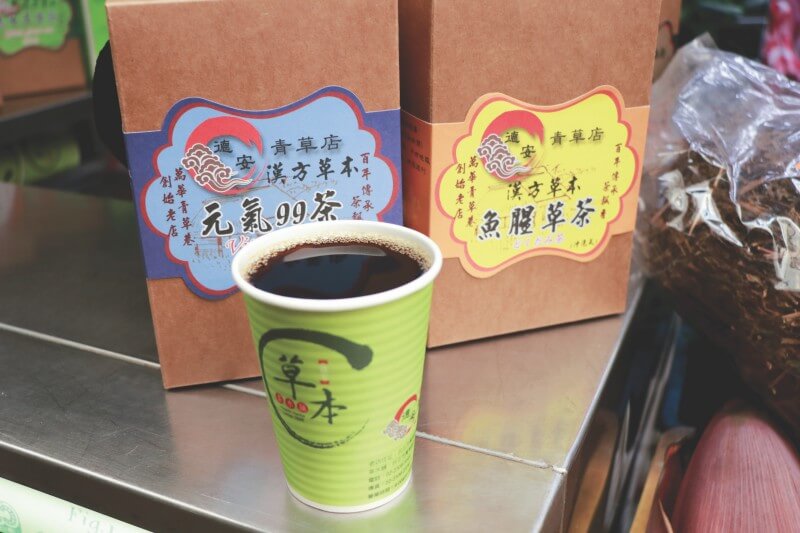
Sitting five minutes away from the temple is the Bopiliao Historic Block (剝皮寮歷史街區), where street scenes of the Qing Dynasty (清朝, 1636 A.D. – 1912 A.D.) are preserved in two rows of traditional brick houses. These two-story buildings with arcades on the first floor used to be an important commercial area during the Qing Dynasty and Japanese era. Nowadays, it serves as an educational exhibition hall in the community.
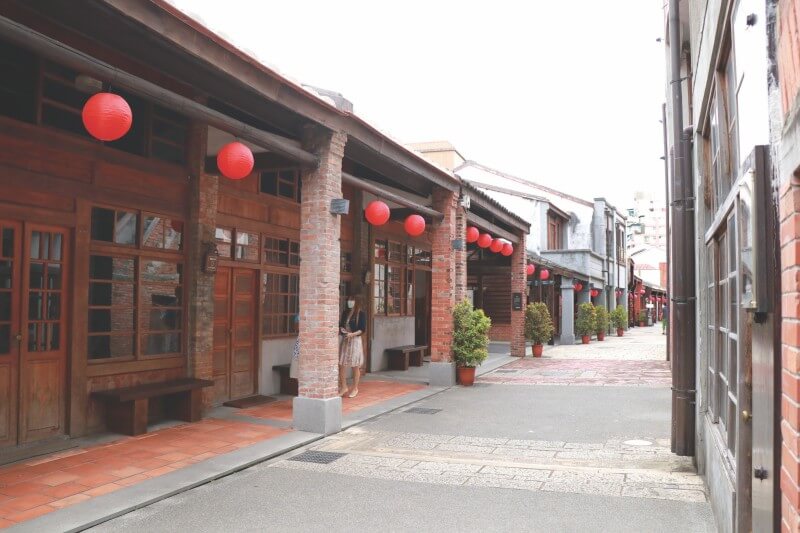
Section One of Xiyuan Road (西園路) on the temple’s west side is known as Buddhist Implement Street (佛具街), lined with sellers of statues and other worship items for temples, shrines, and homes. These are also popular with overseas tourists looking for exotic souvenirs. Arguably, praying to the deities for protection of the home, family members and the community at large, and communicating with them are key components of everyday existence, providing believers with assurance for the future.
Another major local temple is Bangka Qingshan Temple (艋舺青山宮), built in 1856, known especially for its resplendent carved beams and murals. Its Qingshan King Rituals (青山王祭典) are the biggest event of the year in Bangka, when it seems the whole community comes out. The extravaganza lasts three days with visually and aurally lavish deity parades. (Read more: The Qingshan King Rituals of Bangka)
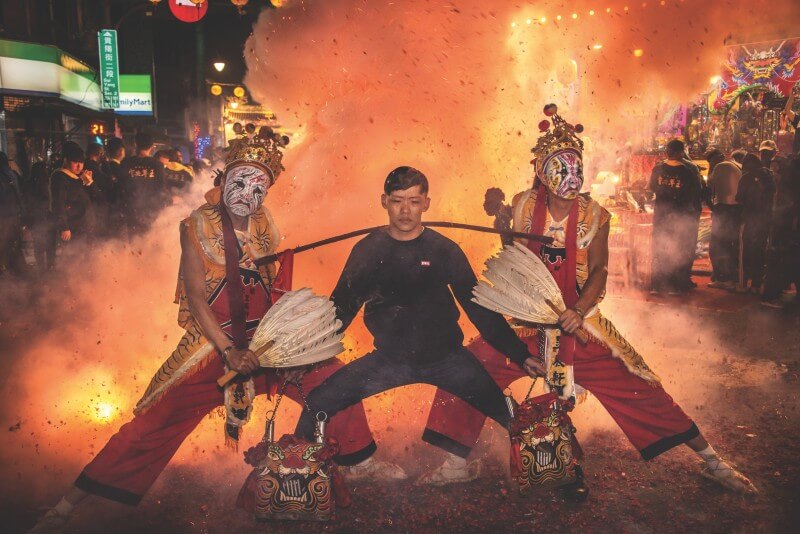
As one would expect, the most traditional culinary ways are also held dear in Bangka. Through Chinese history, a key location for vendor markets to spring up has been around busy temples, serving the steady streams of worshipers from near and far. Bangka’s premier night market, known island-wide, is Huaxi Street Tourist Night Market (華西街觀光夜市), immediately west of Longshan Temple. Among the many classic snack treats visitors line up for are pork-rib soup (排骨湯), red-yeast pork (紅燒肉), and cuttlefish stew (花枝羹). (You might also like: 22 things to eat and do around Taiwan’s Presidential Office Building)
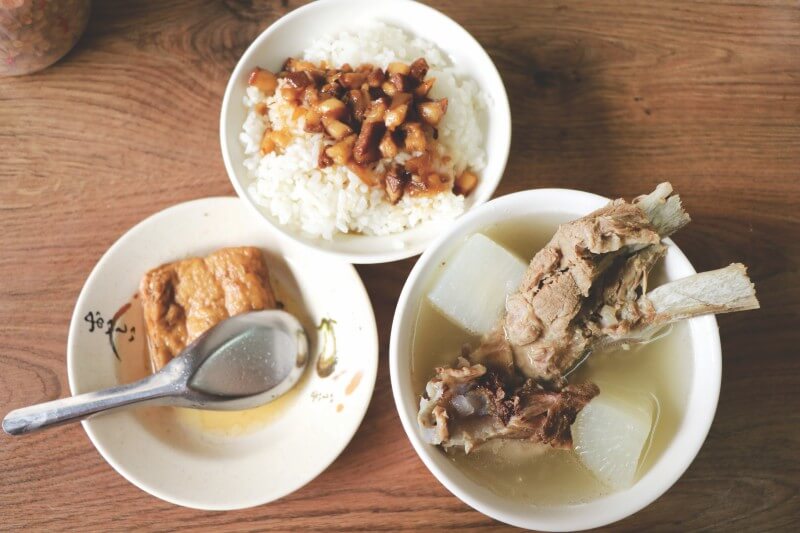
4. NORTH TOWN — Cultural-Arts Corridor
North Town neighbors Dadaocheng’s eastern edge. Its boundaries are Chengde Road (承德路) on its west side, Zhongshan North Road (中山北路) on its east, Changan West Road (長安西路) on its south edge, and Minsheng West Road (民生西路) on its north.
This community was largely formed after the Japanese took over Taiwan, with many Japanese civil officials resident. Today, running north-south through its heart from MRT Zhongshan Station (捷運中山站) to MRT Shuanglian Station (捷運雙連站) is the long,
narrow Xinzhongshan Linear Park (心中山線形公園), an elongated oasis that used to be the site of a railway line. Temporary cultural-arts exhibits are often staged in the park, food trucks set up every weekend, and an indie-designer craft fair is held on the second weekend of every month. Beneath the park is the longest underground book street Eslite 79 (誠品R79) that sells all kind of design books, adding even more artful atmosphere to the North Town. (You might also like: How to Have the Perfect Picnic in Taipei)
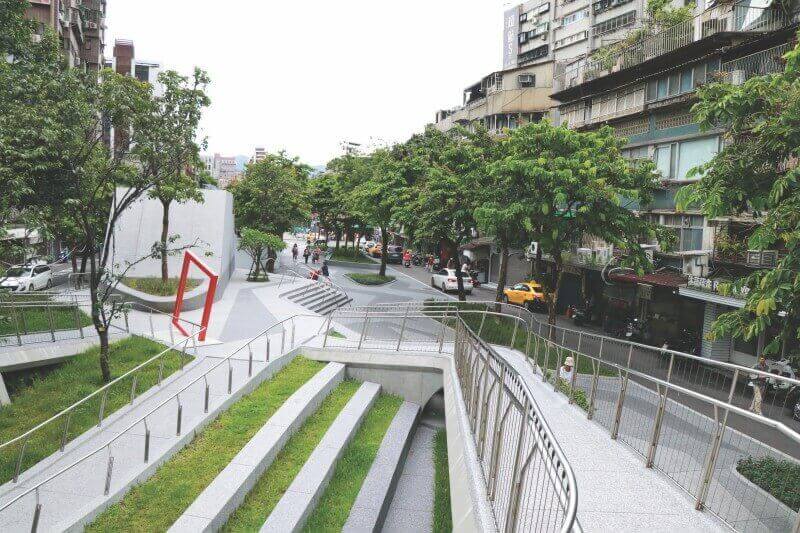
In past times, the North Town area was a place of refined cultural pursuits — a tradition carried on today, notably with the Museum of Contemporary Art Taipei (MOCA Taipei, 台北當代藝術館) and the Tsai Jui-yueh Dance Research Institute (蔡瑞月舞蹈研究社), both located in Japanese-built heritage complexes. The influx of shining new ideas also continues in the form of a growing concentration of cultural-creative shops and bookstores.
MOCA Taipei is in a two-story red-brick building that 22 was built in 1919 as an elementary school for Japanese children. The architecture is a hybrid of Victorian and Edwardian styles, with perhaps the most visually compelling attraction the bell tower rising from the roof’s center. The building was meticulously refurbished before Taiwan’s first museum dedicated to contemporary art opened in 2001, concentrating on the themes of art, design, and architecture, with no permanent exhibits. (Read also: Exploring Museums with Kids in Taipei)
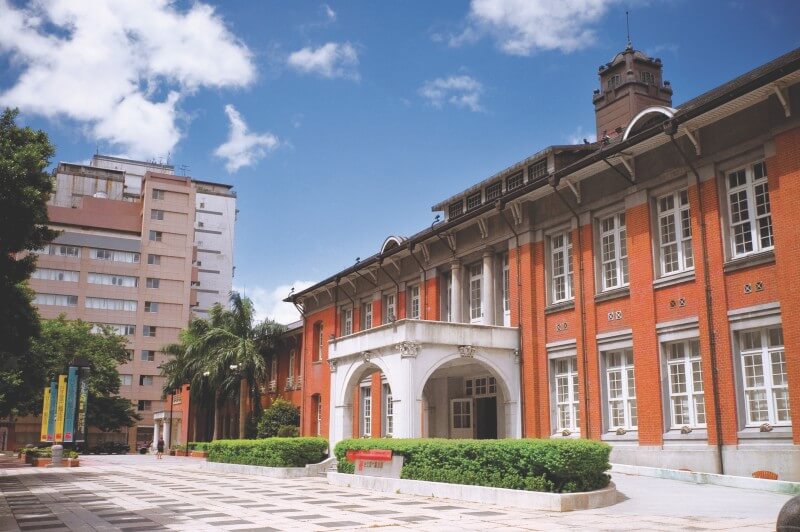
As for the Tsai Jui-yueh Dance Research Institute, the institution is housed in what originally was a Japanese-era dormitory for civil servants. The wood-built double-building complex, set amidst a well-tended lawn and green space, was later the home, classroom, and studio for Tsai Jui-yueh (蔡瑞 月), praised as the “mother of modern dance in Taiwan.” Part of the space is now taken up by an attractive café with outdoor seating. (Read also: Breaking into the Mainstream: Meet the Spanish B-boy Helping to Grow Hip-hop Dance Culture in Taipei)
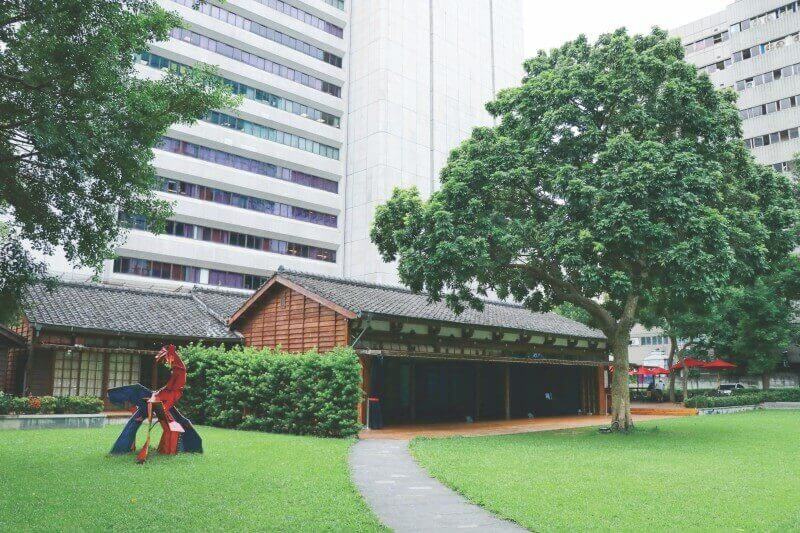
Besides, nearby Taipei Film House (台北之家) is a quiet garden of cultural elegance. Formerly the residence of US ambassadors to the ROC — Richard Nixon also famously stayed here during his VP days — this tree-surrounded white-exterior mansion has a striking American antebellum design. Today the heritage site is a place where cinema is celebrated and creative exchange fostered. In addition to sitting down for arthouse films in an 88-seat theater in what was originally the garage, enjoy specially-made drinks named after famous films in the Café Lumière or in the Le Ballon Rouge bar. Well-crafted souvenir items are sold in the SPOT Design boutique shop — original handmade items from Taiwan and premium-design goods from around the globe. (Read more: 8 Taiwanese Movies and Dramas to Watch on Netflix During your Coronavirus Quarantine)
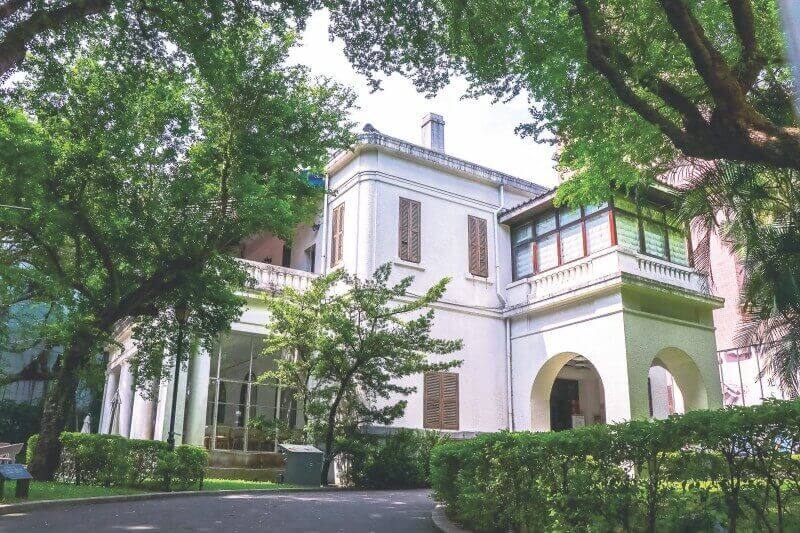
For hipsters who are looking for a destination with energetic vibes, Chifeng Street (赤峰街), once renowned as “Blacksmith Street” (打鐵街), is the top choice. Vivid graffiti art and installation artworks adorn Chifeng and its adjoining alleys. A small army of youthful entrepreneurs has set up camp in the old commercial buildings — stylish bookstores, cafés, bakeries, workshops, and other cultural- creative initiatives — bringing a chic new spirit while at the same time celebrating yesteryear’s architectural aesthetics.
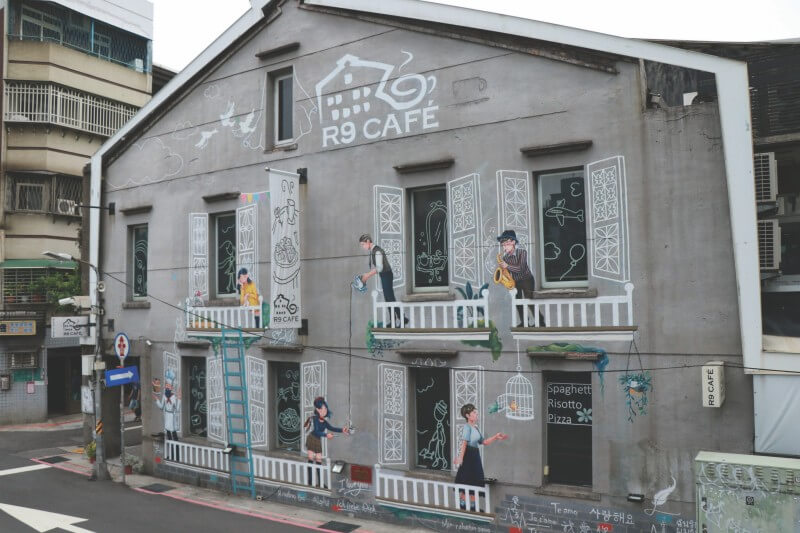
5. SOUTH TOWN — Knowledge & Enlightenment
South Town Eco Museum encompasses the National Taiwan University campus and the areas south, southwest, and west of it, centered on Roosevelt Road (羅斯福路), Tingzhou Road (汀州路), and Wenzhou Street (溫州街). This area can be defined as an exemplar of the Taiwan democratic mosaic, where over time settlements and communities of disparate peoples have slowly congealed into a single whole.
It is also renowned as an enclave of higher learning. The area was chosen as a demonstration space for urban modernization during the Japanese era, and a base for model education and student cultivation, built around institutions of higher learning. These have given South Town an unusually deep cultural inheritance, evidenced in the form of appealing heritage architecture, a pronounced literary air, and community pride in Taiwan’s cherished democratic society.

National Taiwan University and National Taiwan Normal University (國立台灣師範大學) are in Taiwan’s elite corps of post-secondary institutions. Since their founding by the Japanese, the two have been a fount of future Taiwan leaders, and students from both have invariably been at the center of protests and other pushes in Taiwan’s democratization struggles as well.
Emanating from its small forest of places of higher education, South Town has a powerful thirst for knowledge and enlightenment that is also manifested in its dense population of bookstores, student- focused cafés, and reading rooms. Gongguan commercial district (公館商圈) offers an alluring, eclectic grove of indie bookstores. A prime example is Kafka by the Sea (海邊的卡夫卡), which houses an indie bookstore, indie-label record shop, and café, with arts events, unplugged music performances, and exhibits regularly held. Besides, Guling Street (牯嶺街), not far away from Gongguan, is a second-hand book street overflowing with treasure; the Kishu An Forest of Literature (紀州庵文學森林), centered on an elegant traditional Japanese-style wooden building used as a banquet restaurant during the Japanese era, is a serene space where literature lovers luxuriate in reading, writing, and coffee. (You might also like: Step Inside the Enchanting World of Picture Books)
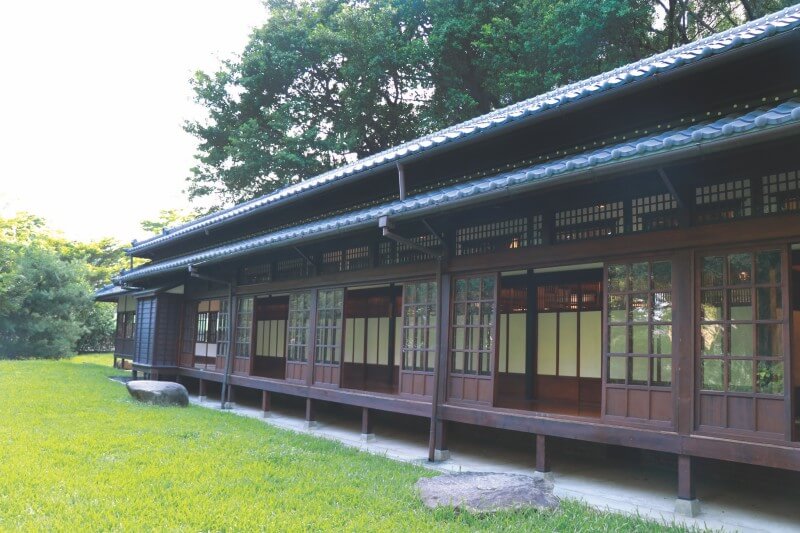
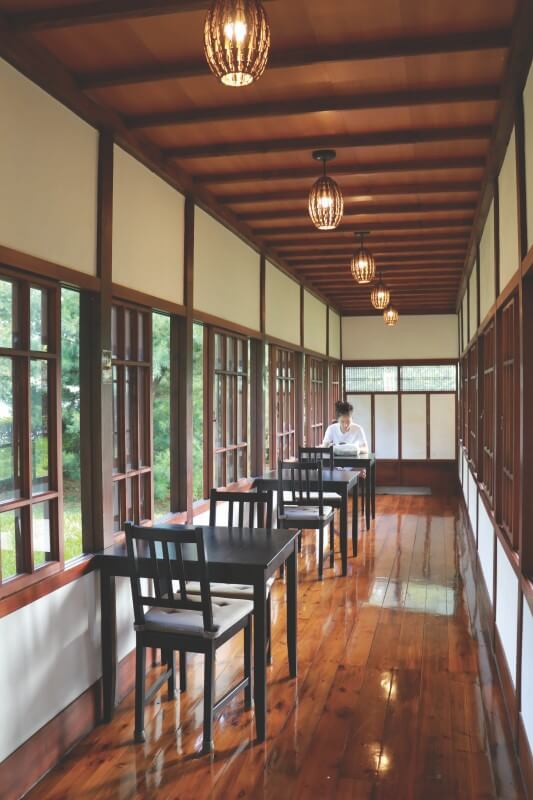
Among the early settlers in the South Town area, where the Xindian River runs out from the hills into this corner of the Taipei Basin, was a strong contingent of Hakka. The Hakka, a Han Chinese subgroup, is the second-largest ethnic group in Taiwan. They are renowned for their simple living habits and frugality, willingness to take on hard, deep family loyalty, and business acumen built on a foundation of integrity. With their own language and customs, Hakka people have developed a unique culture including religion, music, food, architectural features and more. South Town’s expansive Taipei City Hakka Cultural Park (台北市客家文化主題公園) is where you can see traditional water wheels from a rural Hakka village, or even try dried persimmon if you’re visiting during fall. (Read more: HsinPu Persimmons, Golden Pearls of Wisdom)
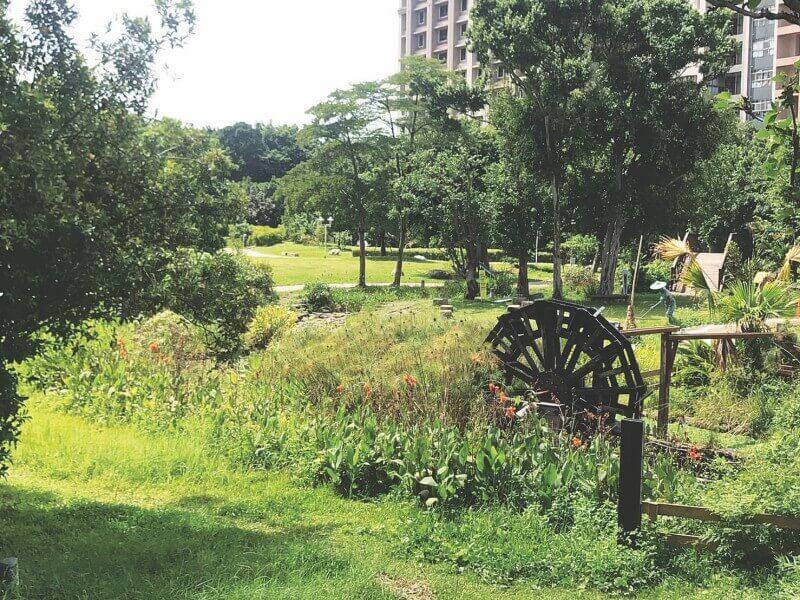
In addition, Taiwan once had almost 900 military dependents’ villages — collections of simple cement-walled structures, many right in the midst of cities, home to the families of military personnel who came to Taiwan as part of the 1940s Nationalist exodus from China. The Treasure Hill village (寶藏巖), a dense neighborhood of jerry-built structures spread over a hill overlooking the Xindian River, has been transformed into the bohemian Treasure Hill Artist Village (寶藏巖國際藝術村), brimming with eclectic public artworks, artist studios, and exhibit spaces. The permanent residents remain the core of the area, with the artist village born as an incubator for community revitalization. (You might also like: An Art Festival Never Sleeps — Nuit Blanche Taipei)
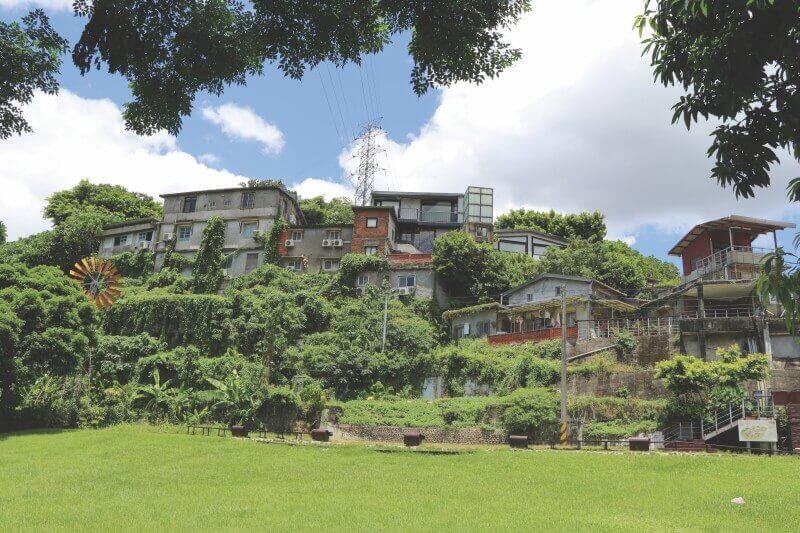
Five urban-neighborhood eco museums without walls, each of singular character, await your arrival for cultural exploration. Enjoy!
Find more Insights of Taipei
- [Taiwan Insider] Reaching New Heights: A Guide to Taipei 101
- Taipei — The Most Kid-Friendly City in Asia
- 8 Awesome Things to Do on American Street, Ximending, Taipei
- National Palace Museum Experiences: a Taste of Taiwanese Tea Culture
- Baosheng Cultural Festival: A Festive Event Full of History, Religion and Community
This article is reproduced under the permission of TAIPEI. Original content can be found at the website of Taipei Travel Net (www.travel.taipei/en).

